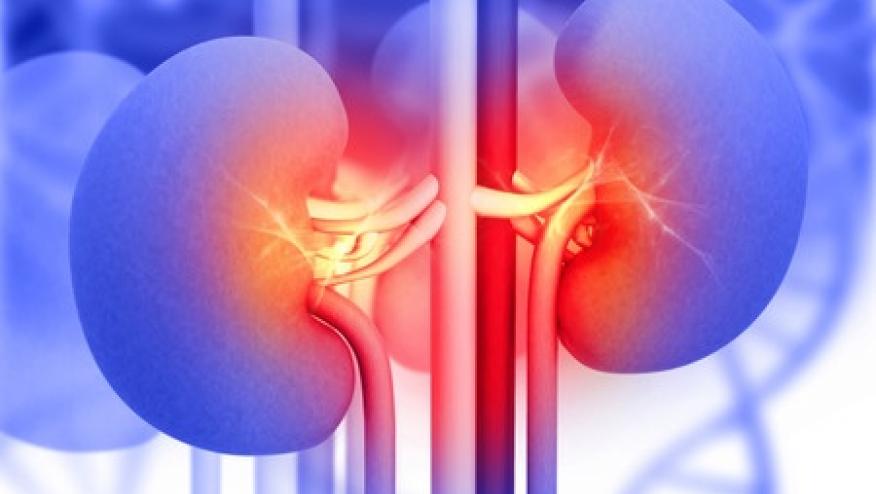Tubulointerstitial Damage in Lupus Predicts ESRD Progression Save

The presence of tubulointerstitial damage (TID) may provide a potential window for early intervention in lupus nephritis (LN) to ward off end-stage renal disease (ESRD), according to a data analysis.
Of the 131 LN patients with estimated glomerular filtration rate (eGFR) of ≥30 mL/min/1.73m2, 17 (13%) progressed to ESRD. TID was observed in a significant number of clinically indicated kidney biopsies in LN patients who did not have advanced chronic kidney disease.
Moderate-to-severe TID was present in 13% of biopsies with an eGFR of ≥60 mL/min/1.73m2 and in 33% of biopsies with eGFR of 30-60mL/min/1.73m2, reported Anna R. Broder, MD, of Albert Einstein College of Medicine-Montefiore Medical Center in New York City, and colleagues.
This is the first study showing the impact of TID on progression to ESRD in patients with normal to moderately impaired renal function, they wrote in Seminars in Arthritis & Rheumatology.
The authors found it to be a strong predictor of progression, independent of eGFR or glomerular findings. Tubular interstitial inflammation (TII), however, was not a predictor.
"If confirmed in large prospective studies, early detection of TID may lead to the development of effective prevention strategies, and TID-directed therapeutic targets," they noted.
Previous research has shown that LN can occur in up to 60% of systemic erythematosus (SLE) patients, 10% to 30% of whom will progress to ESRD.
Seeking to determine whether TID predicts progression ESRD in LN patients without advanced kidney disease, Broder's group identified SLE patients in their center's database who had an index biopsy for LN during January 2005 to July 2015 and an eGFR of ≥30 mL/min/1.73m2.
Defined as moderate-to-severe tubular atrophy and/or interstitial fibrosis, moderate-to-severe TID was found in 131 patients, 82% female, whose median age at biopsy was 26 (18-40). Half the cohort was African American and 34% was Hispanic.
Moderate-to-severe TID was associated with an adjusted hazard ratio for progression of 4.1 (95% CI 1.4-12.1, P=0.01) for an eGFR of ≥30 mL/min/1.73m2 and an HR of 6.2 (95% CI 1.7-23.2, P=0.008) for an eGFR of ≥60 mL/min/1.73m2.
It was even higher in unadjusted analyses: 5.2 (95% CI 2.0-13.4, P=0.001). No association emerged between TII and progression to ESRD: unadjusted HR 0.90 (95% CI0/20-4.0. P=0.89); adjusted HR 0.57 (0.13-2.59, P=0.47).
Adding other variables such as protein/creatinine ratio, race, sex diabetes, and hypertension did not affect outcome.
"This study provides clinical evidence in support of the prior experimental findings that tubulointerstitial inflammation and glomerular damage may occur independently, and that different mechanisms may contribute to immune complex deposition in glomeruli and in tubulointerstitium in the early stages of lupus-related kidney disease," Broder told MedPage Today. "We are closely collaborating with our nephrology colleagues to improve the time to biopsy and treatment initiation in an effort to minimize glomerular and tubulointerstitial damage."
Fotios Koumpouras, MD, of Yale University in New Haven, Conn., commended the analysis for its well-defined cohort and assessments by two independent renal pathologists.
"The study lends insight into tubular interstitial inflammation as a separate independent variable impacting long-term renal function," he told MedPage Today. "The results indicated significant prevalence of tubular interstitial damage overall in lupus nephritis biopsies, with increased prevalence of tubular interstitial damage in individuals with moderate renal impairment."
Koumpouras, who was not involved in the study, noted that the severity of TID was not associated with the degree of proteinuria, complement levels, or double-stranded DNA titers.
"Early detection tools for tubular inflammation are needed. Targeting therapies towards glomerular inflammation and tubular interstitial inflammation will likely lead to improved renal outcomes and the treatment of lupus nephritis," he said.
According to Broder's group, biomarkers such as miRNA, vimentin, and pentraxin might be useful for detecting TII and early TID. A large 2016 study, for example, found the inflammatory protein pentraxin 3 to be closely linked to TID in LN patients.
Therapies directed at TII and early fibrosis may include anti-tumor necrosis factor (TNF) agents, as well as TNF-related weak inducer of apoptosis/Fn14 inhibition and anti-fibrotic agents, the authors noted. However, they cautioned that more evidence on the optimal timing and the effectiveness of these interventions is needed. They pointed to experimental research suggesting that mycophenolic acid, the metabolite of mycophenolate mofetil, may have anti-fibrotic effects on tubular cells that are independent of its immunomodulatory actions.
"Further studies are needed to validate our findings in a larger dataset." Broder said. "To identify lupus patients at risk for developing tubulointerstitial inflammation and damage early in the disease course and to determine if early immunosuppression may prevent tubulointerstitial damage in these individuals."
Study limitations included its retrospective design and the small numbers of patients with TID/TII and ESRD progressors. Furthermore, complete information on disease activity and medication use was not available for all patients, nor could medication compliance be assessed. The study may have been underpowered to detect important baseline differences between ESRD progressors and non-progressors, and the wide confidence intervals need to be interpreted with caution.
"However, this is the first study to demonstrate the impact of TID on ESRD progression in patients with normal to moderately impaired renal function, where early detection and intervention may be most effective," the authors wrote.










If you are a health practitioner, you may Login/Register to comment.
Due to the nature of these comment forums, only health practitioners are allowed to comment at this time.